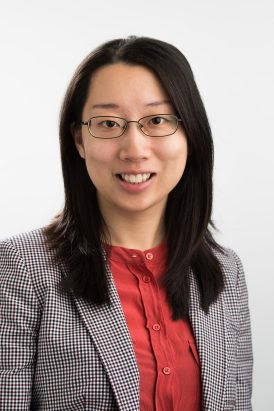Title: Associate Professor
Country/Region: U.S.A.
Period: 2023/04/01-2023/6/30
Theme: Understanding fluid migration in the Japan subduction zones using repeating earthquakes and earthquake cycle simulations
Host: Aitaro KATO
Introduction: My name is Yihe Huang and I'm an Associate Professor at the University of Michigan. My group studies the physical mechanisms of earthquakes and faulting processes using both observational methods (e.g., seismic data analysis) and numerical tools (e.g., earthquake rupture simulation). We’re particularly interested in how fluid, fault zone structure and fault geometry can affect the nucleation, propagation and arrest of earthquakes and how earthquakes contribute to the strain budget and structural evolution of fault zones and plate boundaries. We also have a broad interest in developing physical tools for seismic hazard mitigation and bridging earthquake science and engineering applications.
Research Report:
Yihe HUANG
Research Report
In the Japan subduction zones, repeating earthquakes are commonly found near the locked regions. In collaboration with Professor Aitaro Kato at ERI, I utilized the rich catalog of small repeating earthquakes to analyze the in-situ material properties of the Japan subduction zones. I measured in-situ Vp/Vs ratios directly using P- and S-wave differential travel times from a waveform cross-correlation technique (Lin and Shearer, 2009; Huang et al., 2016). Our preliminary results from earthquakes in the Kanto region showed a low median Vp/Vs ratio of ~1.5 at 60-70 km on the Pacific slab while higher Vp/Vs ratios at 20-30 km on the Philippine slab. The contrasting Vp/Vs ratios and the more active seismicity at 60-70 km indicate that the variations in mineral compositions of fault zone materials may primarily control the locations of repeating earthquakes. The results demonstrate that the comparison of temporal variations in aseismic slip and Vp/Vs ratios will be a powerful tool to understand the relationship between fault slip and fault zone material properties. This project also greatly benefits from the collaboration with Professor Satoshi Ide at the University of Tokyo and Assistant Professor Keisuke Yoshida at Tohoku University as well as the discussions with colleagues at NIED and Tohoku University during my visit. Lastly, I would like to thank the staff at the ERI international office who have offered tremendous help during my visit.
(Received 2023/6/29)
Research Report
In the Japan subduction zones, repeating earthquakes are commonly found near the locked regions. In collaboration with Professor Aitaro Kato at ERI, I utilized the rich catalog of small repeating earthquakes to analyze the in-situ material properties of the Japan subduction zones. I measured in-situ Vp/Vs ratios directly using P- and S-wave differential travel times from a waveform cross-correlation technique (Lin and Shearer, 2009; Huang et al., 2016). Our preliminary results from earthquakes in the Kanto region showed a low median Vp/Vs ratio of ~1.5 at 60-70 km on the Pacific slab while higher Vp/Vs ratios at 20-30 km on the Philippine slab. The contrasting Vp/Vs ratios and the more active seismicity at 60-70 km indicate that the variations in mineral compositions of fault zone materials may primarily control the locations of repeating earthquakes. The results demonstrate that the comparison of temporal variations in aseismic slip and Vp/Vs ratios will be a powerful tool to understand the relationship between fault slip and fault zone material properties. This project also greatly benefits from the collaboration with Professor Satoshi Ide at the University of Tokyo and Assistant Professor Keisuke Yoshida at Tohoku University as well as the discussions with colleagues at NIED and Tohoku University during my visit. Lastly, I would like to thank the staff at the ERI international office who have offered tremendous help during my visit.
(Received 2023/6/29)
View All
Fiscal Year: 2023
Fiscal Year: 2023


